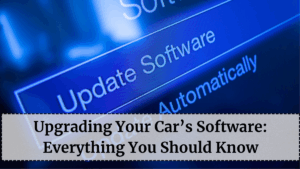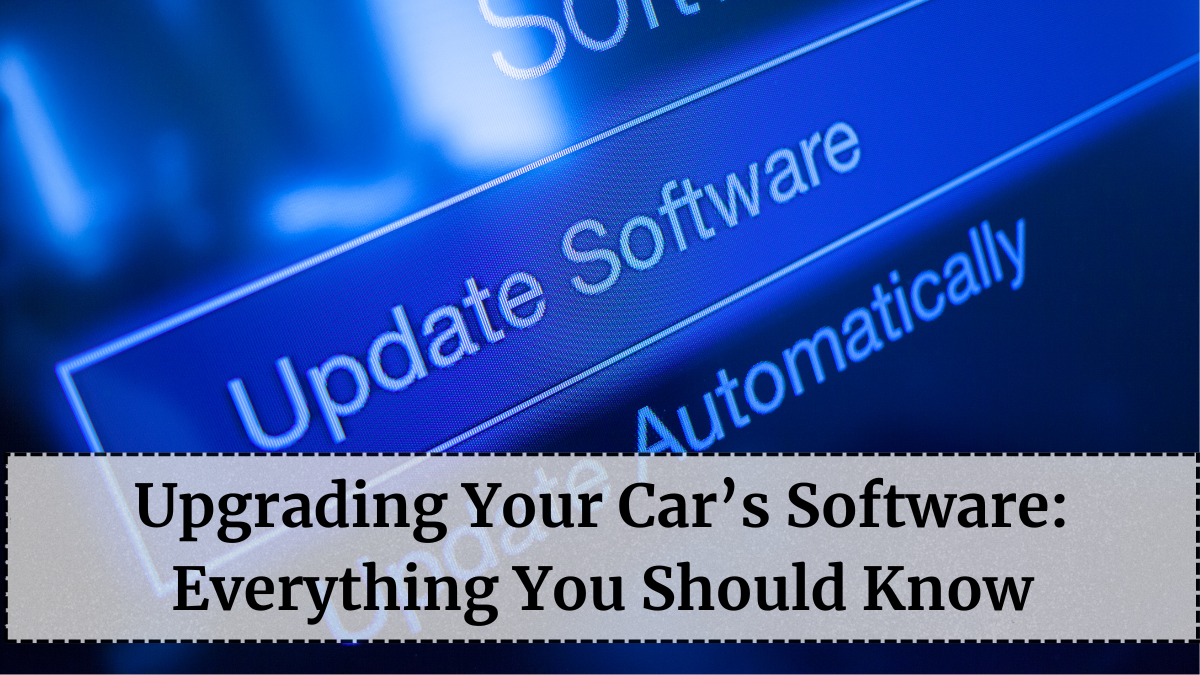In 2025, your car isn’t just a vehicle — it’s a rolling computer. From infotainment systems and navigation to battery management and safety controls, software powers nearly every function inside a modern car. But like smartphones and laptops, these systems also need regular updates to stay secure, fast, and efficient.
A car software upgrade can bring new features, improve performance, fix bugs, and enhance safety. However, understanding when and how to update is crucial to avoid errors or compatibility issues. This guide explains everything you should know about upgrading your car’s software safely and effectively.

How It Works
A car software update is a digital improvement to your vehicle’s existing firmware — the code that controls its various systems. These updates are delivered either Over-the-Air (OTA) through the internet or manually at authorized service centers.
Software upgrades can affect several key areas such as:
-
Infotainment systems (navigation, voice assistant, touchscreen controls)
-
Driver Assistance Systems (ADAS, parking sensors, lane keep assist)
-
Battery and Engine Management Systems
-
Connectivity features (Bluetooth, Wi-Fi, smartphone pairing)
Why It Matters in 2025
Cars are now software-defined vehicles (SDVs). This means their core functionalities are controlled by software that can evolve long after the car leaves the showroom. Regular updates help manufacturers fix bugs, patch security vulnerabilities, and deliver new capabilities — just like mobile OS upgrades.
Types of Car Software Updates
1. Over-the-Air (OTA) Updates
These are the most common and convenient updates in 2025. Automakers like Tesla, BMW, and Hyundai use cloud servers to push new software directly to your car via Wi-Fi or cellular connection.
Benefits:
-
No need to visit a workshop.
-
Takes minutes to install.
-
Enables quick fixes and new feature rollouts.
2. Dealer or Service Center Updates
Some vehicles still require updates through diagnostic tools at authorized service centers. These typically involve firmware upgrades for engine control units, ADAS calibration, or major system changes.
Benefits:
-
Professional supervision ensures zero errors.
-
Ideal for critical updates involving mechanical systems.
3. Infotainment and App Updates
Car infotainment systems like Android Automotive OS, Apple CarPlay 2.0, and Mercedes MBUX receive regular updates for UI improvements, app compatibility, and performance optimization.
These updates are lightweight and usually automatic when the car connects to Wi-Fi or a smartphone hotspot.
The Benefits of Keeping Your Car Software Updated
Improved Safety and Stability
Modern safety systems rely on precise algorithms. Updates fix glitches in driver-assistance features such as collision alerts or adaptive cruise control, improving reliability.
Enhanced Performance
Engine and battery management systems often receive tuning adjustments via updates. These can improve acceleration, energy efficiency, and even range for electric vehicles.
New Features and UI Enhancements
Manufacturers frequently add new functions through OTA updates — like voice assistant upgrades, improved navigation visuals, or personalized driving modes.
Stronger Cybersecurity
Connected cars are vulnerable to hacking attempts. Regular updates patch security loopholes and keep your vehicle’s data safe from unauthorized access.
How to Prepare Before Updating
1. Check Compatibility
Before updating, verify your car’s firmware version and ensure the new update is compatible. Incompatible software can cause errors in critical systems.
2. Ensure Stable Connectivity
If your car uses OTA updates, ensure a strong Wi-Fi or 4G/5G connection before starting. Interruptions can corrupt files and affect installation.
3. Maintain Sufficient Battery Level
Keep your car’s battery charged above 50%. Some updates disable the ignition during installation, so power is crucial.
4. Back Up Settings
Many cars allow you to back up preferences such as radio presets, seat memory, or navigation favorites. Save them before updating to avoid data loss.
Common Mistakes to Avoid
-
Ignoring updates for months: Delayed updates can expose your vehicle to bugs and cyber threats.
-
Using unofficial software: Only install updates from your automaker or certified dealers. Third-party firmware can void warranties.
-
Interrupting the process: Turning off the ignition or disconnecting the network mid-update may cause system errors.
-
Skipping reboot: Some updates require a full restart for the new firmware to function properly.
Post-Update Checklist
After the upgrade:
-
Reconnect Bluetooth and Wi-Fi devices.
-
Verify that apps and settings are functioning correctly.
-
Check dashboard alerts for any residual error codes.
-
Test critical features like reverse camera, navigation, and voice commands.
The Future of Car Software Updates
By 2026, most vehicles will become fully software-defined, capable of continuous self-updates. Cars will automatically download updates overnight, adjusting to driver habits through AI learning.
Manufacturers are also exploring subscription-based feature unlocks, allowing drivers to activate performance or comfort upgrades temporarily. This ensures that your car will keep evolving — long after purchase.
FAQs
How often should I update my car software?
Most cars release updates every 3 to 6 months, though urgent security patches may arrive sooner.
Can I update my car’s software myself?
Yes, if your vehicle supports Over-the-Air (OTA) updates. Otherwise, visit your authorized service center.
What happens if a software update fails?
If an update fails, the system usually rolls back to the previous version. Contact your dealer for assistance if the issue persists.
Do software updates cost money?
Most updates are free during the warranty period. Premium or feature-based upgrades might require a one-time or subscription payment.
Will software updates improve car performance?
Yes, updates can enhance efficiency, battery management, and responsiveness by optimizing the car’s electronic systems.
Click here to know more.
